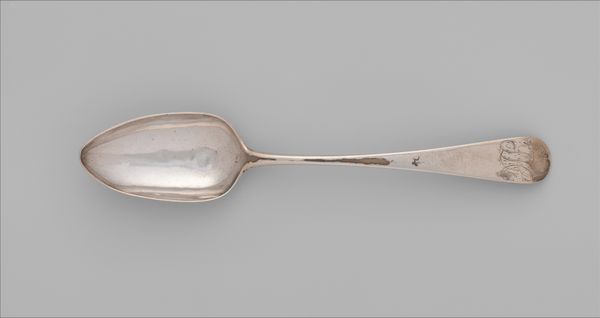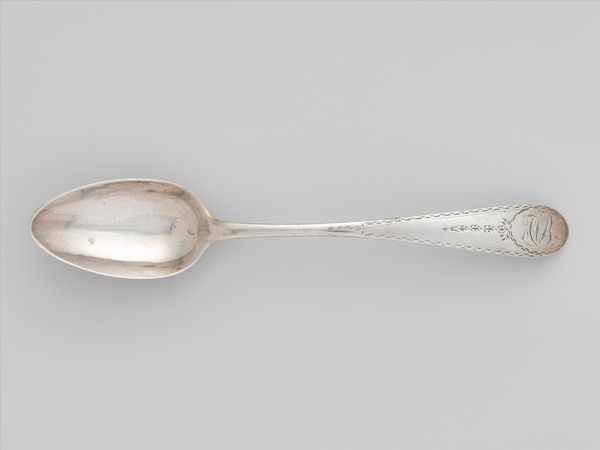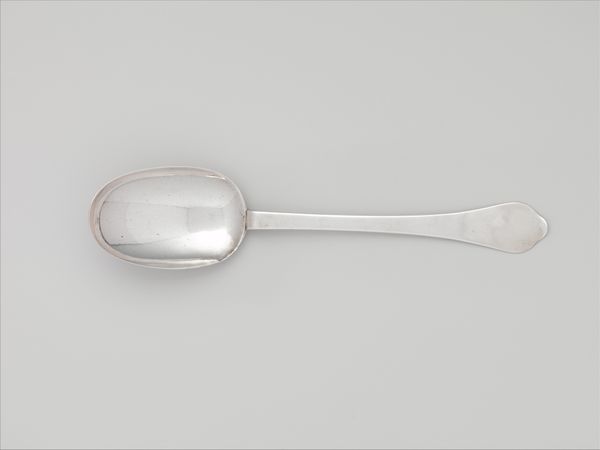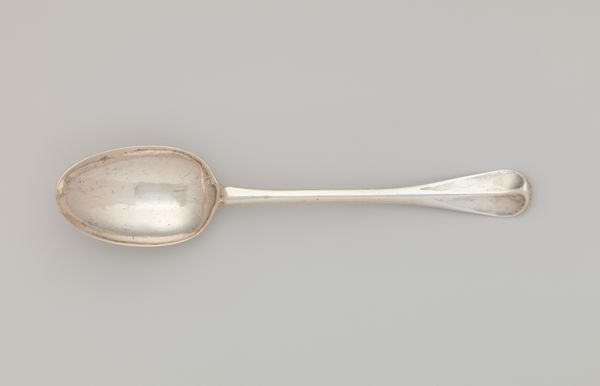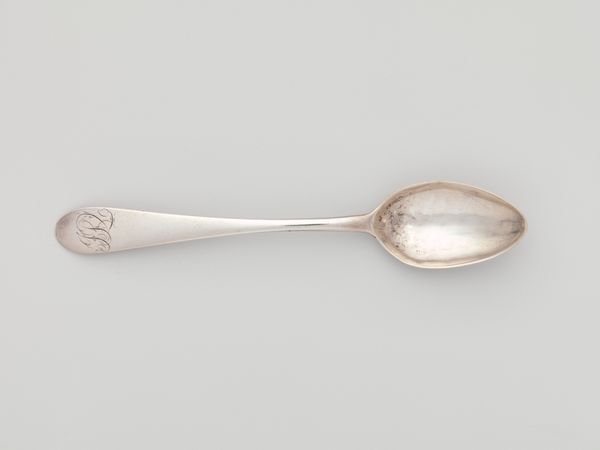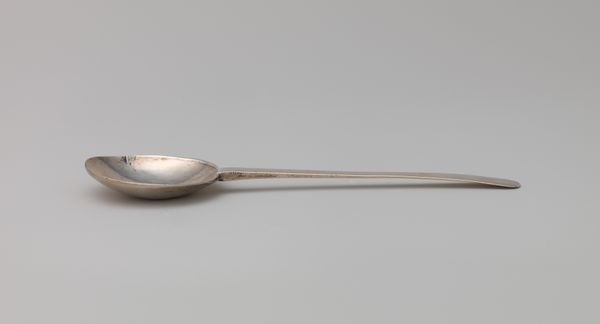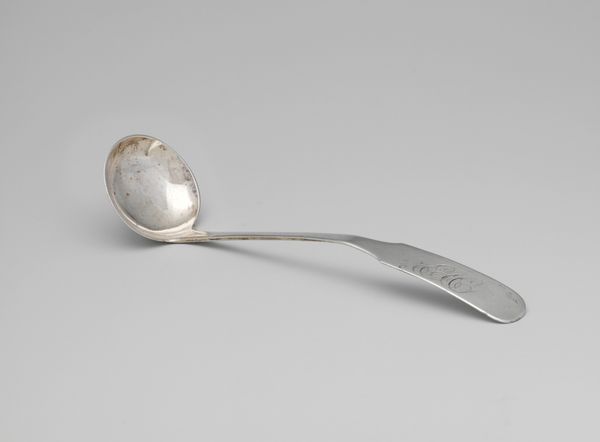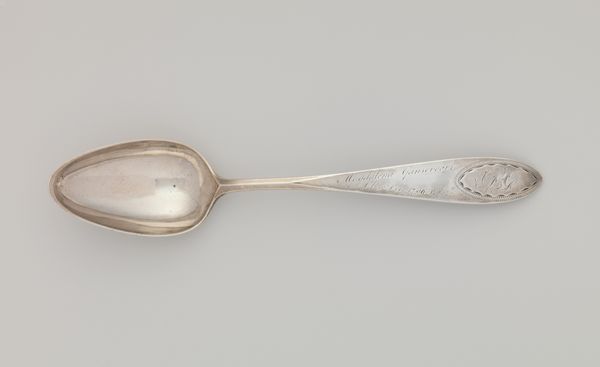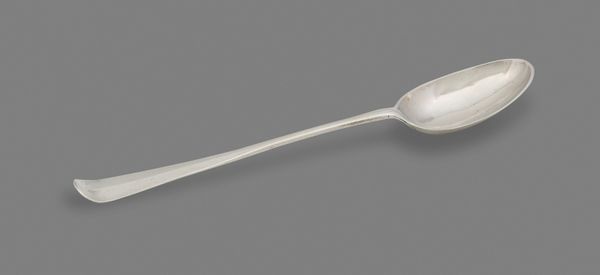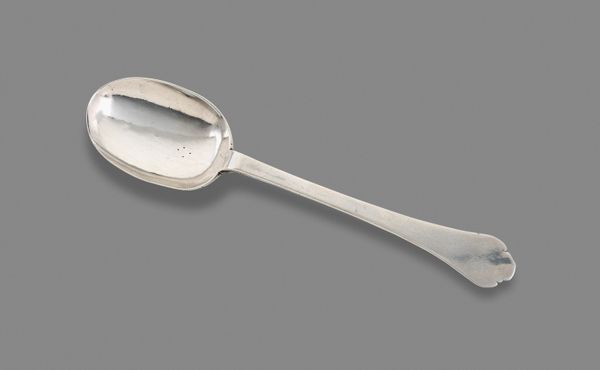
silver, metal, photography
#
silver
#
baroque
#
metal
#
photography
Dimensions: Overall: 1 7/8 x 15 1/2 in. (4.8 x 39.4 cm); 9 oz. 2 dwt. (284.3 g) Bowl: W. 2 15/16 in. (7.5 cm)
Copyright: Public Domain
Editor: Here we have a "Serving Spoon" crafted from silver sometime between 1755 and 1765, currently residing at The Metropolitan Museum of Art. Its simple elegance is really striking, considering its everyday function. What does this piece communicate to you? Curator: Utilitarian objects such as this spoon are deeply embedded in the social fabric of the period. Its very existence suggests a certain level of domestic comfort and perhaps even affluence. The silver material is indicative of social standing; do you think that everyday objects could ever convey political statements? Editor: Political? I wouldn't have thought so. Curator: Well, think about it: during this time, owning silver was a display of economic power. Silverware would have been inventoried in estates, included in portraits and represented as more than just ‘stuff.’ A simple spoon could, therefore, reflect broader political and economic power structures within colonial society. Have you also noticed the engraved initials? Editor: Yes, "E * M". What do they signify? Curator: These initials provide a glimpse into the owner's identity, offering possibilities for uncovering familial ties, inheritance patterns, and social networks through genealogical research. Silverware was, and to an extent remains, deeply embedded in social traditions; silverware might be passed down, displayed for guests or memorialized for their social and cultural significance. How does this impact our perspective? Editor: So, a spoon isn't just a spoon. It carries weight beyond its function. Seeing it in the broader context of its time completely changes how I understand it. Curator: Exactly. The socio-political context adds layers of meaning. We appreciate it not just for its form, but for what it represents about the society that produced and used it.
Comments
No comments
Be the first to comment and join the conversation on the ultimate creative platform.
